The Gila River
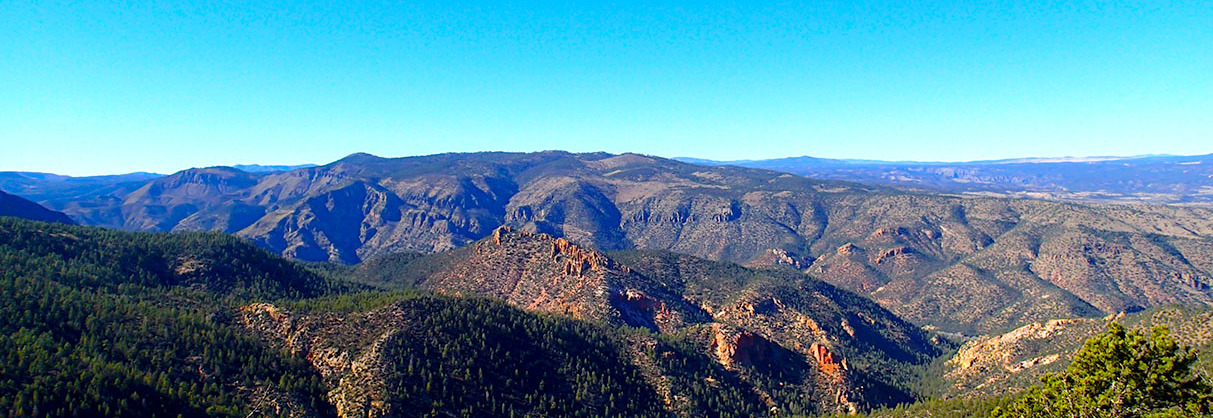
The Gila Wilderness
The Gila Wilderness is more than our first wilderness designation it is also a unique and well preserved watershed that maintains the longest stretch of unencumbered wilderness river left in the lower 48 states.
The three forks and various tributaries as well as a large portion of the Gila River are encompassed within the Gila wilderness and that is undoubtedly the reason the Gila River exists. Recently New Mexico’s Interstate Stream Commission passed a proposal to have the river dammed and diverted in an effort to solve southern New Mexico’s agricultural water shortage.
Seth Burrus surveys Black Canyon, a tributary to the east fork of the Gila River, for endangered native Gila Cutthroat Trout. Seth is among many people in southern New Mexico that would like to keep the Gila River free of dams and impoundments. Along with Seth there are non profit organization here in southern New Mexico that have been working to keep the Gila wild and free. Southwest Environmental Center (SWEC) here in Las Cruces and the Gila Conservation Coalition (GCC) in Sliver City have fought the Interstate Stream Commission’s proposal for the last 10 years.
Caballo Dam forms Caballo Reservoir on the Rio Grande in Southern New Mexico. Groups such as SWEC and GCC site that impoundments such as Caballo (built in 1938) and Elephant Butte (built in 1916) are mistakes in water management that we made in the past. These dams account for the loss of 70 percent of the water in the Rio Grande, the lost water is due to evaporation of the water in the reservoirs. A puddle of water never lasted long in the desert.
Cliffs on the middle fork of the Gila River. The Gila River cuts through some rough country, the river is often crowded in by 1,500 foot cliffs on either side. In any of these wild canyons you can find natural hot springs and massive rock HooDoos along the river.
Backpackers in the cold shade of the Gila’s steep canyon walls on the middle fork of the Gila River. Walking along this wild river you are awed by grandeur and scale of the cliffs and the crystal clear water.
The Sycamore, oak and Pine trees that inhabit the riparian areas of the Gila River. The Wilderness aspect of the Gila River, due to it being our very first wilderness designation, allows us to take a scientific approach to understanding the natural hydrology of these river systems and the habitat that supports and shades the river and avoids the evaporative water loss that is the nature of a desert climate. It is important to avoid making the mistakes of the past with this river, it is better to understand how the natural system makes efficient use of the limited water the Chihuahuan desert provides.


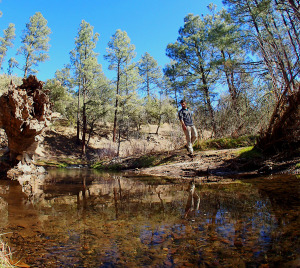
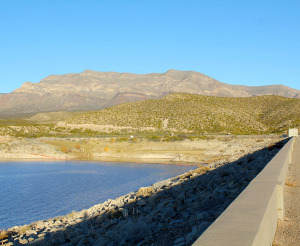
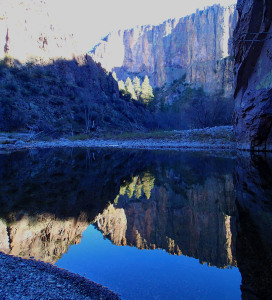
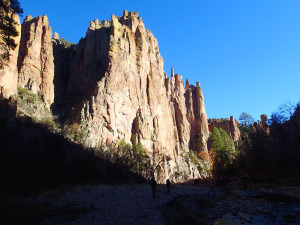
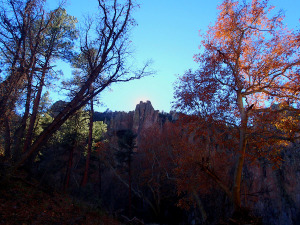





We’ve already critiqued this in class but let’s summarize: Great idea, the captions are good at telling us the “Why” of the place, a few of the photos are shot in the wrong light (harsh, not inviting light) and there is an absence of people that would show that the river is part of a human ecosystem (always a key element of any National Geographic story), as well. I’d also like to see you use some photography techniques to make this a more eye-popping story. For example: 1) a very very slow shutter speed on the river would turn the river into a magic mystical image (tripod needed), 2)Twilight photography to show the river area in an entirely different mood than you have so far, 3)A person kayaking or fishing or dipping (even if it’s tired toes in the stream). The less animated a subject is the more you have to bring powerful light and technique to it.
Lastly, the most powerful thing you could bring to this is time itself. Immersion photography -the heart of documentary projects- brings a fresher eye to a subject each time it is revisited and fresh images keep your viewer engaged. They feel the energy and the “wow” of discovery and insight.
Isn’t that exactly what you’d want them to have? It’s difficult for a photographer to maintain his or her “wow,” in a day-long shoot.
Immersion by doing repeated visits is the way to ensure that result.